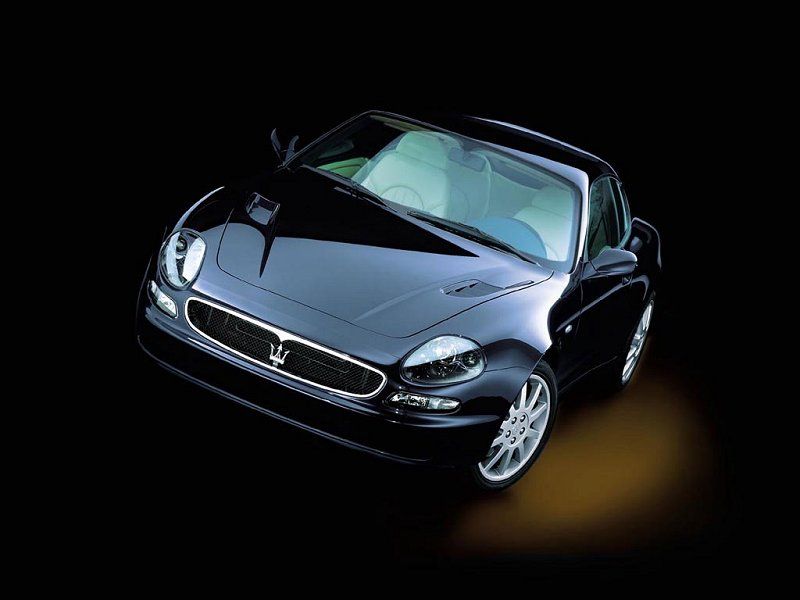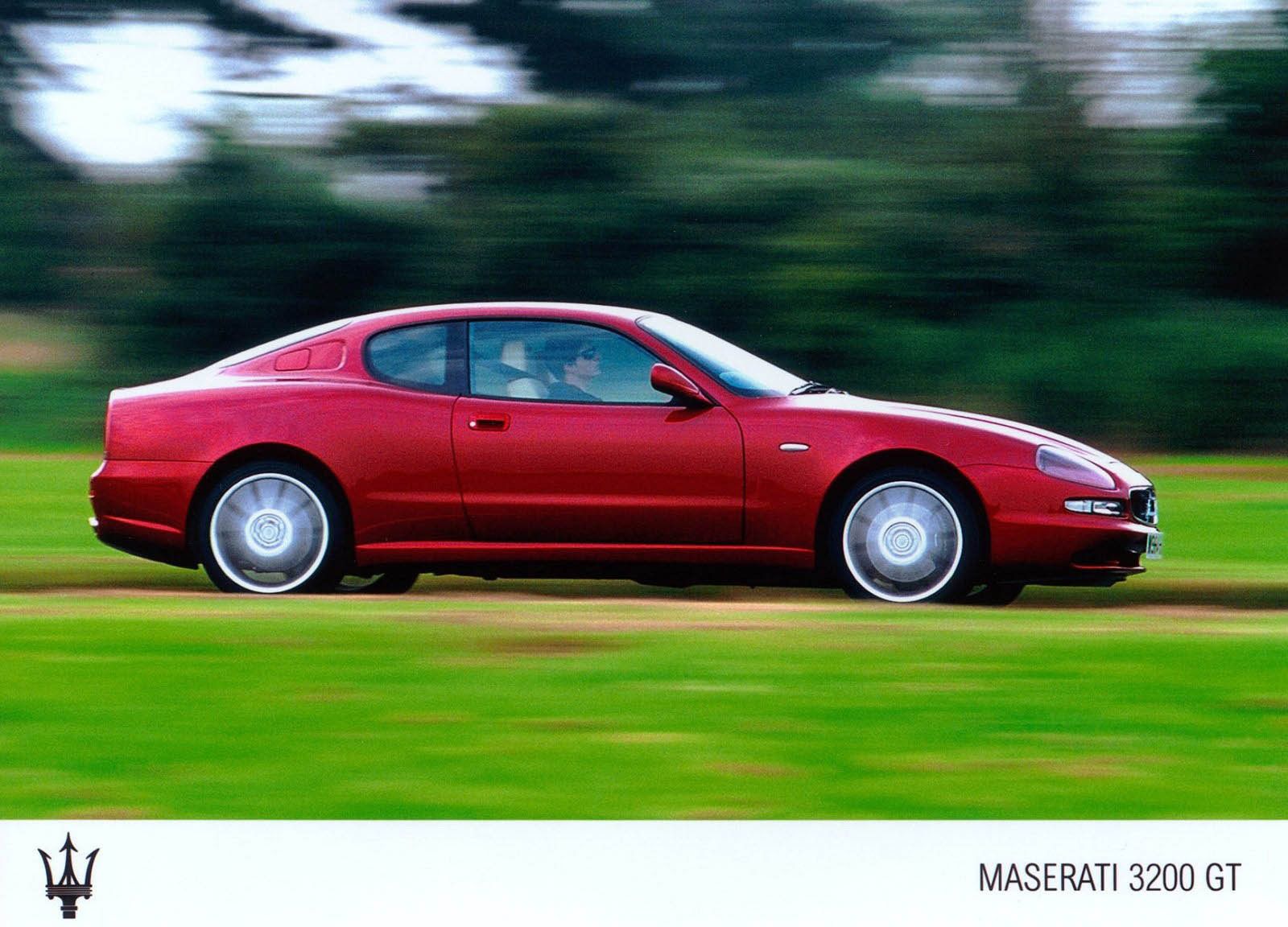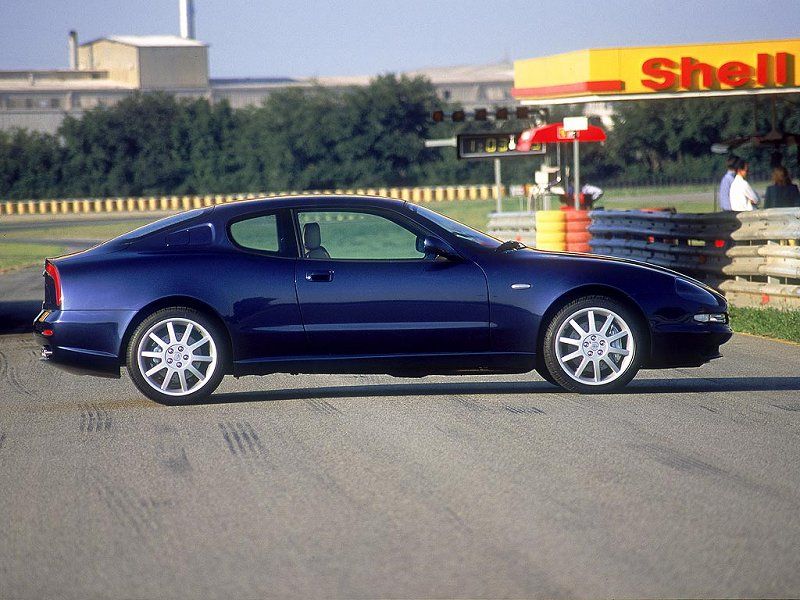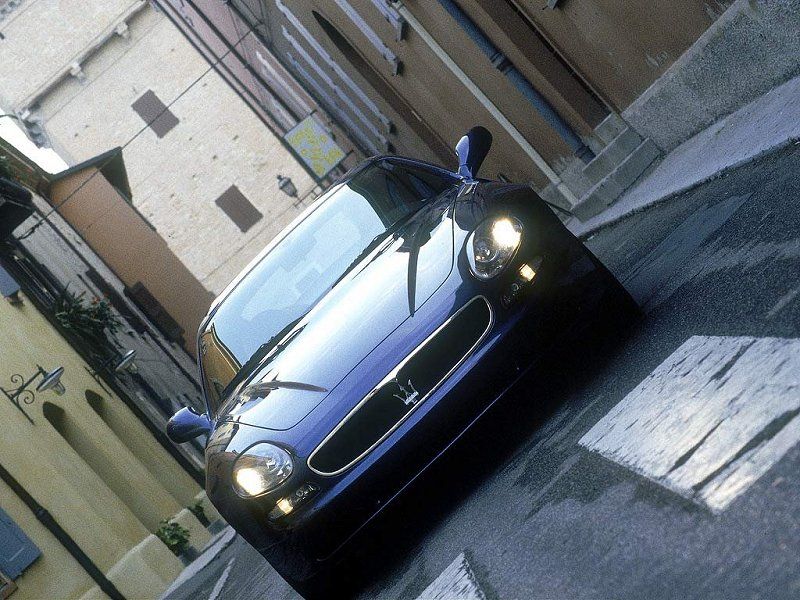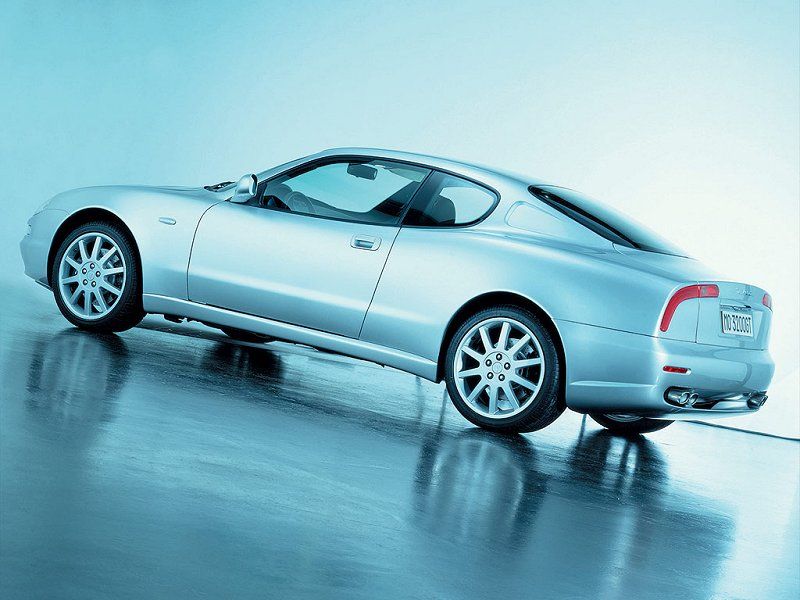Nearly killed off by the 1973 oil crisis, Maserati->ke51 struggled to stay afloat until the 1990s. Despite a mild financial improvement in the late 1970s under De Tomaso->ke27 ownership, Maserati didn't bounce back until the late 1990s, after the brand was sold off to its long-time arch-rival Ferrari->ke252. Althoough the Maranello firm took over in 1998, the last links to the De Tomaso era were cut in 2002, when the 3200 GT was replaced by the Coupe->ke332.
Developed to replace both the Shamal and its V-6-powered brother, the second-generation Ghibli->ke4598, the 3200 GT was introduced in 1998, five years after De Tomaso sold its 51-percent stake to Fiat->ke30 and a year before Ferrari took full control of Maserati. Even though the 3200 GT was a significant departure from its predecessor, its drivetrain was based on the Shamal's, which was already eight years old and somewhat dated for a luxury->ke505 coupe->ke141 aimed at Jaguar->ke39 and Porsche->ke1 products.
As a result, the 3200 GT was sold for only four years and replaced for the 2002 model year by the Coupe, which featured similar styling but gained a brand-new engine co-developed with Ferrari. The 3200 GT was the last Maserati to use technology developed under De Tomaso ownership and marked the retirement of the twin-turbo, 3.2-liter V-8 unit. Since then, all Maseratis have been fitted with engines developed in cooperation with Ferrari.
Although far from a classic, the 3200 GT is now regarded as the car that opened a new chapter for Maserati, bridging the gap between the struggling, De Tomaso-owned company and the reborn, Ferrari-managed brand.
Continue reading to learn more about the Maserati 3200gt.
2000 Maserati 3200 GT
- Make: Array
- Model: 2000 Maserati 3200 GT
- Horsepower: 370@6250
- Torque: 4500
- Transmission: 6 speed manual
2004 - 2005 Maserati MC12
- Make: Array
- Model: 2004 - 2005 Maserati MC12
- Engine/Motor: 5.3 liter V8
- Horsepower: 280@6000
- Torque: 4000
- Transmission: 5-Speed Automatic
- [do not use] Vehicle Model: Array
Exterior
Styling-wise, the 3200 GT was a massive departure from the Shamal. While the latter was designed by Marcello Gandini at Bertone with a boxy styling reminiscent of the 1980s, the 3200 GT was penned by Giugiaro with a more modern appearance, rounded features, and a more traditional grand tourer shape. The 3200 GT was also significantly longer at 177.6 inches compared to the Shamal's 161.4 inches. Consequently, the the 3200 GT also had a longer wheelbase that measured 104.7 inches, whereas the Shamal's was 94.5 inches.
The 3200 GT also introduced a new design language for Maserati, which was later used on Coupe and some cues were used to create the GranTurismo model that came in 2007. While the its styling was in line with other grand tourers of the era, especially those wearing Jaguar and Aston Martin badges, the 3200 GT had a few unique features. The most notable were the thin "boomerang" taillights. These were replaced on the Coupe and were dearly missed by most Maserati enthusiasts.
In 2001, Maserati launched the limited-edition Assetto Corsa wich was available in Grigio Touring and Griogio Alfieri greys or Rosso Mondiale red. It was also equipped with dark grey BBS allow wheels, "Assetto Corsa" badges, and its ride height was lowered by 0.6 inches.
Interior
Created by Enrico Fumia, known for his work with car design firm Pininfarina, the 3200 GT's interior was also a significant improvement over everything Maserati has released until then. With a wheelbase that was about the same size as the fourth-generation Quattroporte, the grand tourer offered seating for four adults in comfort.
The new, organic design was highlighted by improved luxury materials. The leather upholstery on the seats and dashboard was standard, as was the suede headlining and the high-quality carpet. The sporty seats were supportive during spirited driving and provided comfort for longer trips.
Other standard features included a leather-wrapped steering wheel, climate control system, CD stereo, electric windows, and airbags for the driver and front passenger. Customers in need of a more exclusive cabin had access to the Officine Alfieri Maserati program for personalized options which gave them access to new interior colors and finer materials.
The limited-edition Assetto Corsa model was equipped with sports pedals, perforated Connolly leather upholstery, and specific sill covers.
Drivetrain
Motivation came from the twin-turbo, 3.2-liter V-8 that Maserati also offered in the Shamal and the fourth-generation Quattroporte. However, output was increased to 365 horsepower and 362 pound-feet of torque, 34 horsepower and 40 pound-feet more than the Quattroporte IV and up 44 horses and 42 pound-feet compared to the Shamal.
At first sold with a six-speed manual transmission, the 3200 GT received an automatic gearbox in 1999. The model was marketed as the 3200 GT Automatica (GTA) and features a four-speed torque converter automatic supplied by Australian firm BTR. Output remained unchanged with the autobox, but the coupe's curb weight increased from 3,505 to 3,571 pounds.
Performance-wise, the manual 3200 GT needed around 5.1 seconds to hit 60 mph from a standing start, while the GTA achieved the same benchmark in 5.7 ticks. Top speed was rated at 174 mph with the manual and 168 with the automatic transmission. Compared to the Shamal, the 3200 GT was two tenths of second quicker and four mph faster. That might not seem like a lot, but we must keep in mind that the Shamal was significantly lighter at 3,124 pounds.
The grand tourer used a steel unibody structure and a double wishbone suspension system at all four corners, which consisted of forged aluminium control arms and uprights, coaxial aluminium-bodied dampers and coil springs, and two anti-roll bars. A two-piece aluminum driveshaft connected the gearbox to the limited-slip differential. Stopping power came from a Brembo braking system with vented and cross-drilled discs with four-piston calipers. Active safety systems included anti-lock braking and Bosch ASR traction control.
Prices
The 3200 GT retailed from £53,000 on its first year on the market. The automatic transmission added another £2,500 to the sticker. Far from being a classic as of 2016, the 3200 GT can fetch between £5,000 and £18,000 on the used car market depending on mileage and condition.
Competition
Jaguar XKR
Launched in 1996 as a replacement for the outdated XJS, the XK8 was very similar to the 3200 GT in terms of size, output, and even styling. Much like its predecessor, it had a long hood and short decklid and was also available as a coupe and convertible. In 1998, just as the 3200 GT had made its debut, Jaguar introduced the more powerful XKR, powered by a supercharged version of the XK8's 4.0-liter V-8. At 370 horsepower, it was on par with the Maserati. However, it was slower from 0 to 60 mph, needing 5.4 seconds to complete the benchmark, while its top speed was limited at 155 mph. Pricing began from around $79,000 for the 1999 model year.
Find out more about the Jaguar XKR here.
Porsche 996 911
The 996-generation 911 arrived in 1997 as the first all-new model since the original car. It featured a new platform and unlike its predecessors, it used a water-cooled engine. The German sports car was powered by a newly developed 3.6-liter flat six that developed 315 horsepower in the base Carrera model, 414 horses in the Turbo, and 444 in the Turbo S. The entry-level version needed 4.9 seconds to hit 60 mph, while the Turbo S achieved the same benchmark in an impressive 3.9 ticks. Top speed was rated at 178 and 193 mph, respectively.
Read more about the Porsche 996-generation 911 here.
Conclusion
When it arrive in 1998, the 3200 GT was gorgeous to look at, especially when compared with its predecessor and the Quattroporte IV, which continued to use Gandini's boxy design language until 2001. The modern design came alongside a redesigned, more luxurious interior that was good enough to give Maserati's main rivals a run for their money. On the other hand, the drivetrain wasn't much of an improvement over the Shamal, especially since the 3200 GT was a lot heavier than its forerunner. Still, that didn't stop it from being quicker than the Jaguar XKR and only a tad slower than the entry-level 996-generation 911. What made the 3200 GT that much more important was that the grand tourer was a sign of things to come. The Coupe that replaced it after only four years brought Maserati back into business and opened a new and successful era for the iconic Italian manufacturer.

